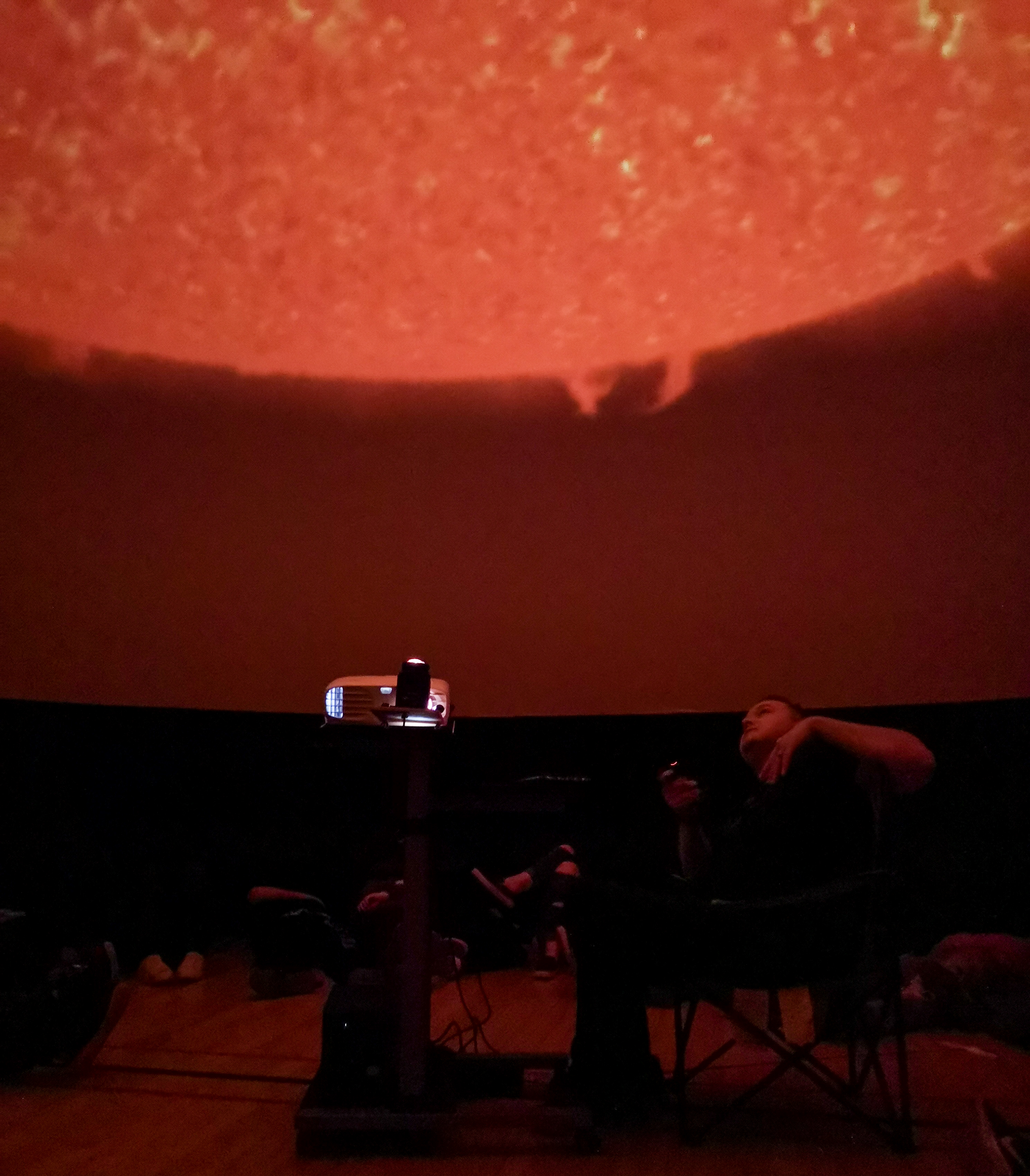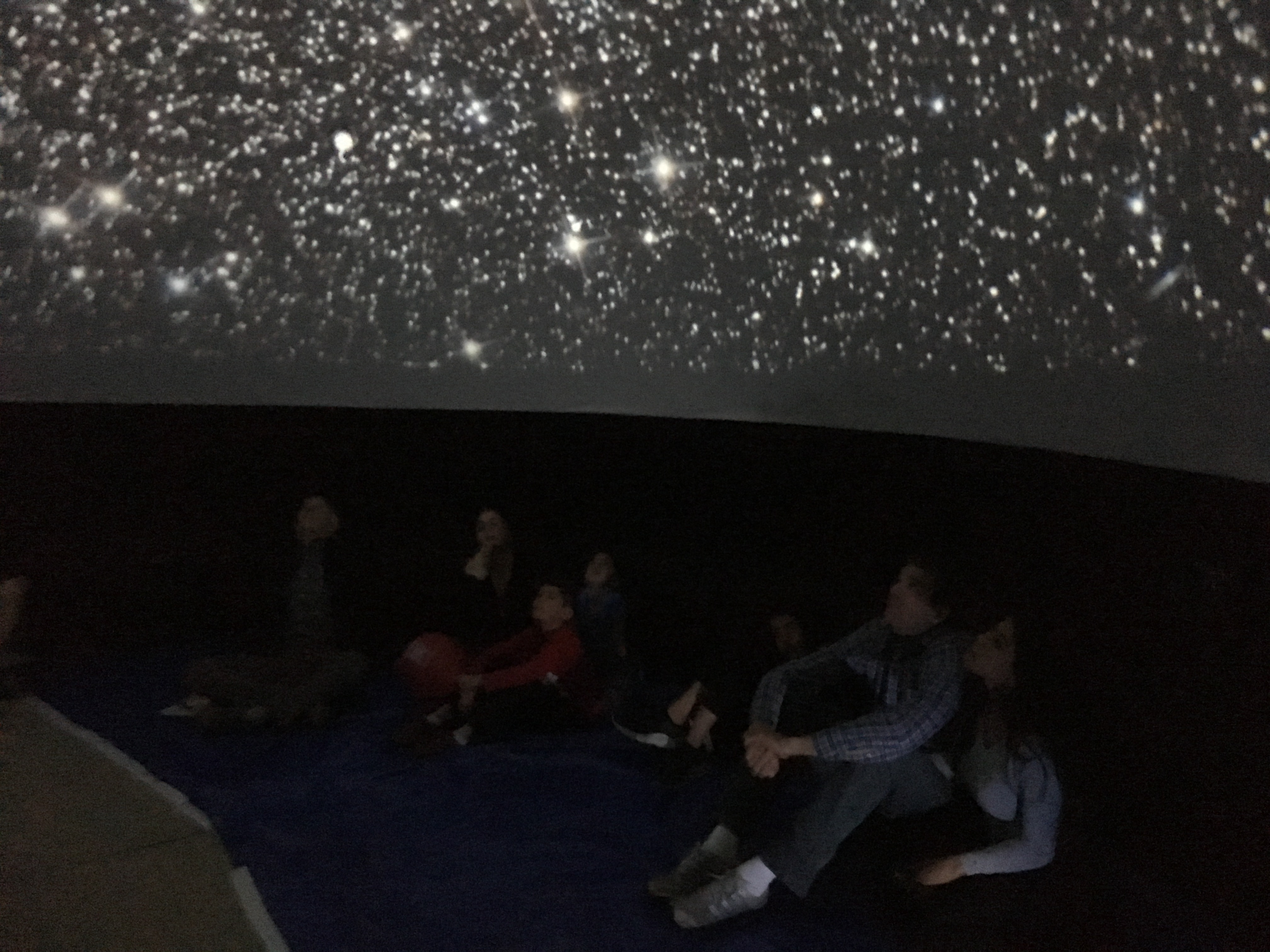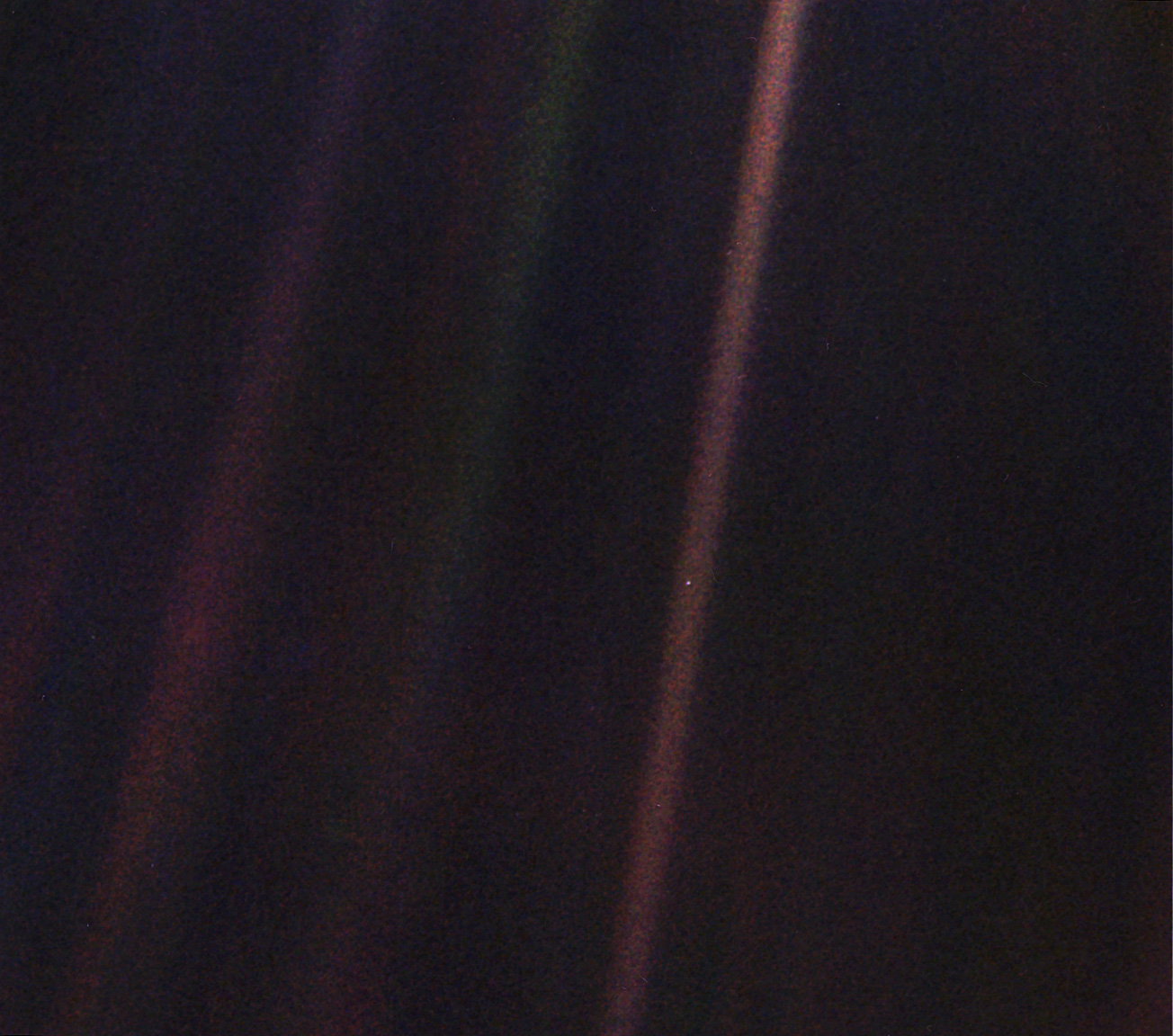“It has been said that astronomy is a humbling and character-building experience. There is perhaps no better demonstration of the folly of human conceits than this distant image of our tiny world.” – Carl Sagan
Whenever I speak to an audience, I ask them how many stars they can see in their night sky. In small town Ontario, the answer ranges from a few hundred to a few thousand. In larger cities, the answer is typically one hundred or less. This simple question captures how humans have diminished our connection to the night sky as we continue to give more attention to technology and flock to urban centres.
The pale blue dot image reminds us that we are simply a tiny world in a vast empty darkness. It can be scary to think about at first. However, the more thought you give to it the more you feel a connection to the whole world, not as one part of a country or ethnicity, but as a human being, part of a collection of 8.7 million species, trying to survive and grow and learn while sharing responsibility for our home.
 |
Ryan MarciniakHe is an astronomer and science communicator. He travels across Ontario with two inflatable planetariums with his company Astronomy in Action, delivering programs and experiences to schools, community groups, and the public.
|
When I show the true night sky to audiences in my planetariums, the response is one of awe and wonder, similar to the feelings the night sky evoked in our ancestors for thousands of years. It shows us how vast and beautiful the universe is. The planetarium can then take the audience a step farther, venturing out into this night sky, flying around Earth, past the Moon, Sun, and stars, and then travelling farther out of the Milky Way to distant galaxies, showing the immense scale of the cosmos. The audience leaves feeling reconnected to the universe, with a new perspective on the Earth.
The planetarium is just one medium for reestablishing this connection, a digital substitute for the real night sky that is becoming harder to find in urban sprawl, not just in Southern Ontario, but around the world. As humans face greater global challenges, it is becoming more important to approach them with a shared responsibility. Space changes our perspective, reminding us of this shared responsibility. This is why space matters.

Visitors experience the night sky in the planetarium (Credit: Astronomy in Action)

Visitors experience the night sky in the planetarium (Credit: Astronomy in Action)

Earth, described by scientist Carl Sagan as a "Pale Blue Dot," as seen by Voyager 1 from a distance of more than 6.4 billion kilometers. (Credit: NASA/JPL-Caltech)


